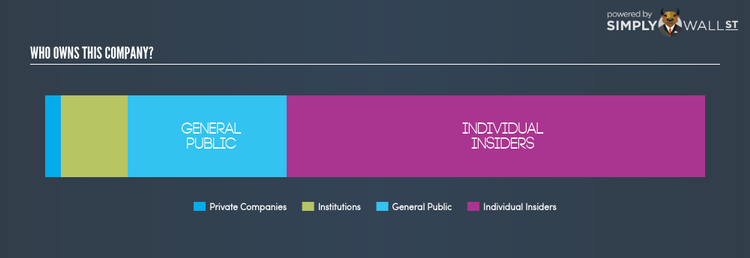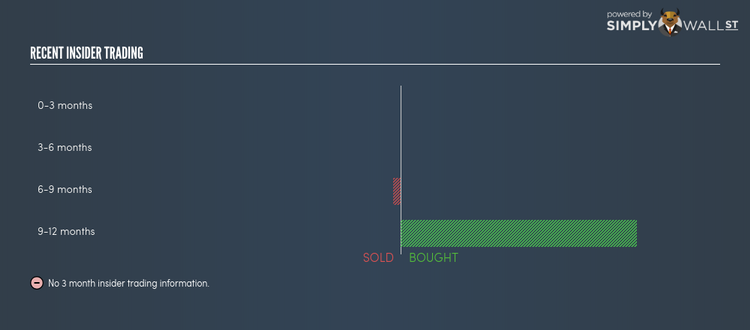Who Are The Largest Shareholders In ITL Health Group (ASX:ITD)?

In this analysis, my focus will be on developing a perspective on ITL Health Group’s (ASX:ITD) latest ownership structure, a less discussed, but important factor. Ownership structure of a company has been found to affect share performance over time. Differences in ownership structure of companies can have a profound effect on how management’s incentives are aligned with shareholder returns, which is why we’ll take a moment to analyse ITD’s shareholder registry. All data provided is as of the most recent financial year end.
See our latest analysis for ITL Health Group
Institutional Ownership
In ITD’s case, institutional ownership stands at 10.10%, significant enough to cause considerable price moves in the case of large institutional transactions, especially when there is a low level of public shares available on the market to trade. However, as not all institutions are alike, such high volatility events, especially in the short-term, have been more frequently linked to active market participants like hedge funds. For shareholders in ITD, sharp price movements may not be a major concern as active hedge funds hold a relatively small stake in the company. Although this doesn’t necessarily lead to high short-term volatility, we should dig deeper into ITD’s ownership structure to find how the remaining owner types can affect its investment profile.
Insider Ownership
Another important group of shareholders are company insiders. Insider ownership has to do more with how the company is managed and less to do with the direct impact of the magnitude of shares trading on the market. 63.30% ownership of ITD insiders is large enough to make an impact on shareholder returns. In general, this level of insider ownership has negatively affected underperforming (consistently low PE ratio) companies and positively affected the companies that outperform (consistently high PE ratio). It may be interesting to take a look at what company insiders have been doing with their holdings lately. Insiders buying company shares can be a positive indicator of future performance, but a selling decision can simply be driven by personal financial needs.
General Public Ownership
The general public holds a substantial 24.06% stake in ITD, making it a highly popular stock among retail investors. This size of ownership gives retail investors collective power in deciding on major policy decisions such as executive compensation, appointment of directors and acquisitions of businesses. This level of ownership gives retail investors the power to sway key policy decisions such as board composition, executive compensation, and potential acquisitions. This is a positive sign for an investor who wants to be involved in key decision-making of the company.
Private Company Ownership
Another important group of owners for potential investors in ITD are private companies that hold a stake of 2.54% in ITD. These are companies that are mainly invested due to their strategic interests or are incentivized by reaping capital gains on investments their shareholdings. However, an ownership of this size may be relatively insignificant, meaning that these shareholders may not have the potential to influence ITD’s business strategy. Thus, investors not need worry too much about the consequences of these holdings.
What this means for you:
The company’s high institutional ownership makes margin of safety a very important consideration to existing investors since long bull and bear trends often emerge when these big-ticket investors see a change in long-term potential of the company. This is to avoid getting trapped in a sustained sell-off that is often observed in stocks with this level of institutional participation. However, ownership structure should not be the only determining factor when you’re building an investment thesis for ITD. Instead, you should be evaluating company-specific factors such as ITL Health Group’s past track record and financial health. I urge you to complete your research by taking a look at the following:
NB: Figures in this article are calculated using data from the last twelve months, which refer to the 12-month period ending on the last date of the month the financial statement is dated. This may not be consistent with full year annual report figures.
To help readers see pass the short term volatility of the financial market, we aim to bring you a long-term focused research analysis purely driven by fundamental data. Note that our analysis does not factor in the latest price sensitive company announcements.
The author is an independent contributor and at the time of publication had no position in the stocks mentioned.


